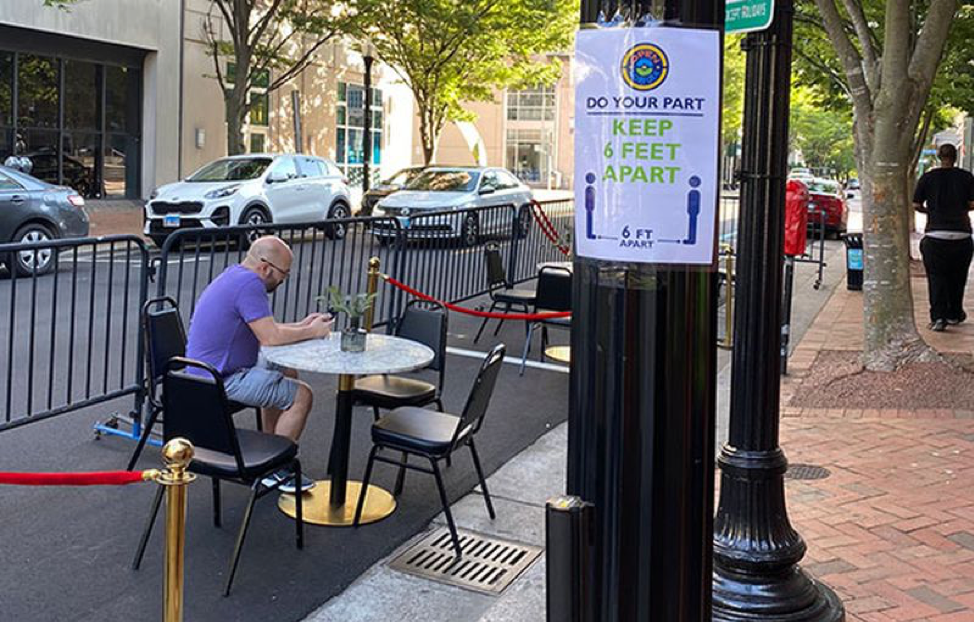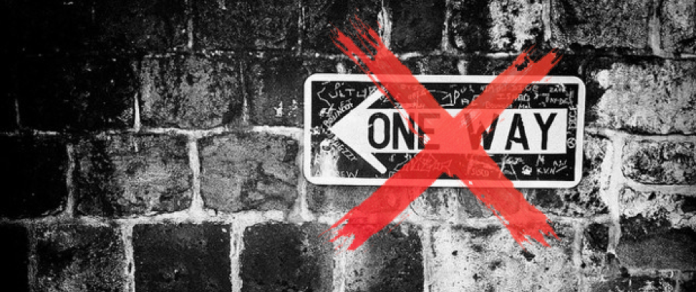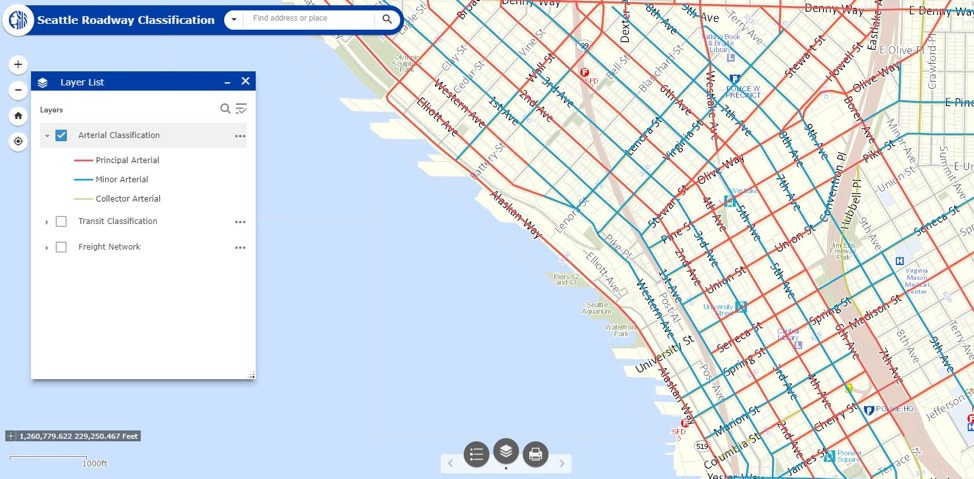Downtown Seattle is more than a central business district. It is a neighborhood 88,000 people call home. This neighborhood has the highest concentration of population anywhere in our city. It is also home to the most restaurants, bars, cafes, and pedestrian-oriented businesses per square mile. These people and businesses are looking for space to keep safe distance and restore vibrancy.
Despite having the highest density in the city, downtown streets are designed to move car commuters at peak traffic times. Nearly all are designated principal arterials and feature one-way traffic design. One-way arterials are dangerous, unpleasant, and polluted roads that are not designed for the neighborhoods they serve.
Reclaiming Urban Space in Crisis

Cities around the world are reclaiming their streets for people and safety. Visionary leaders have taken advantage of the vacated roads and have realized streets thrive with fewer cars. Some have closed streets entirely so restaurants can spill seating into the street, others have popped up bike lanes to test the popularity of new infrastructure. Seattle’s Department of Transportation (SDOT) has focused on car-lite Stay Healthy Streets, which were so initially popular they will make the program permanent. And, albeit late in the process, SDOT will also relax the permitting process for businesses to spill out into parking spaces and sidewalks for dining and retail.
Streets For Outsiders
That brings us to downtown Seattle. If the streets downtown feel comfortable for you, chances are you are driving and commuting into the neighborhood. For the rest of the community, those who live here, bike here, walk here or take transit here, these streets are noisy, scary, and polluted. SDOT classifies over 60% of downtown’s streets as Principal Arterials, which are not included in SDOT’s pilot program for outdoor seating and require additional review. Seattle’s downtown streets are left with archaic designations and designs that have a poor history of racial equity.
One-way streets are terrible designs for downtown. They are designed to move peak traffic loads of outside commuters for a small portion of the day. After peak hours they sit largely vacant, a waste of high value urban space. Few have bike infrastructure or feel welcoming for walking. As urban living decayed in the early 20th Century with the subsidization of car ownership, coupled with a segregation focused White-flight to suburbia, downtown streets across the country converted from two-way streets to one-way. The idea was simple and inconsiderate. People drove in and out of cities to make their 8-to-5 job. So, streets were designed to encourage their attendance and to forget those left living in the community.

But downtown has changed. Starting this century, Seattle has passed several upzones sparking the largest highrise housing boom the city has ever seen. As a matter of fact, City Council District 7–which stretches from Magnolia to Downtown–has grown so dramatically, downtown will likely be its own council district next election cycle.
The Two-Way Slowdown
One-way streets do not belong in neighborhoods or downtown. They encourage high speeds and less safety. Cities that have reverted them back to two-way streets have seen a decrease in pedestrian collisions, less pollution, and more vibrancy. And where extra space is provided, the addition of bike lanes, wider sidewalks, or transit only lanes have encouraged sustainable travel that gets results.
Coming with a giant opportunity cost, parking sees little return on investment. But bike infrastructure, cafe seating, and safe quiet streets? The modest investment brings enormous returns. So how many one-way streets should downtown Seattle have? How about none? Converting all of the streets would be as wildly popular as the Stay Healthy Streets, relaxing outdoor seating permits, and building bike infrastructure.
SDOT has already committed to eliminating beg buttons, and NHL Seattle, the owners of new arena coming to Uptown, have granted millions of dollars to the city for street improvements as part of their public benefits package. Seattle has assets and other potential sources that we can leverage to convert traffic lights and design around urban comfort.
The time is now. Why not utilize the suspension of commuting, as businesses open downtown, and reclaim our streets for people and safety? The biggest hurdle isn’t a financial one, it’s a political one. The city has resources, but do we have the political will?

Ryan DiRaimo
Ryan DiRaimo is a resident of the Aurora Licton-Springs Urban Village and Northwest Design Review Board member. He works in architecture and seeks to leave a positive urban impact on Seattle and the surrounding metro. He advocates for more housing, safer streets, and mass transit infrastructure and hopes to see a city someday that is less reliant on the car.



